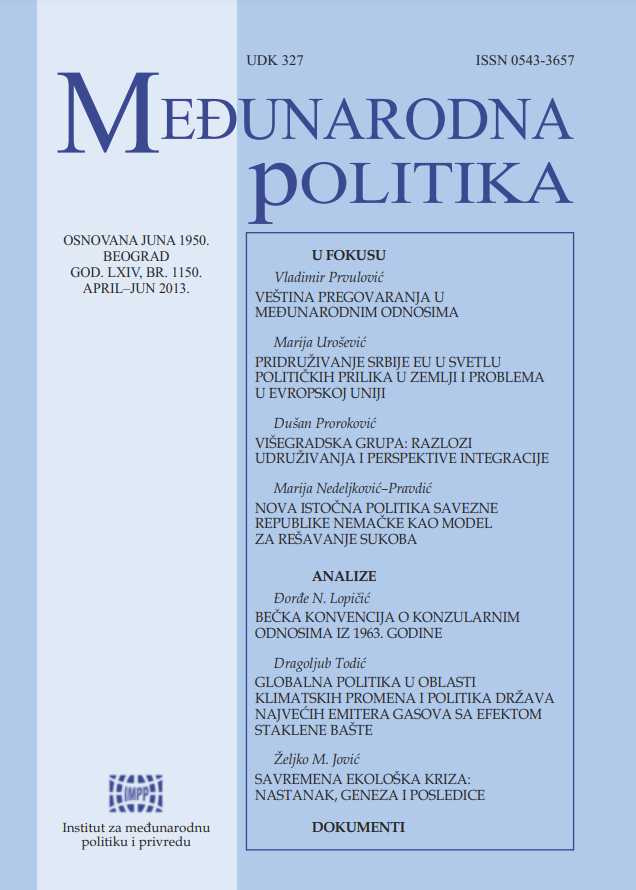Nova istočna politika Savezne Republike Nemačke kao model za rešavanje sukoba
New West German Eastern Policy as a Model or Conflict Resolution
Author(s): Marija Nedeljković-PravdićSubject(s): Post-War period (1950 - 1989)
Published by: Институт за међународну политику и привреду
Keywords: Ostpolitik; policy of détente; Cold War; Holstein Doctrine; Neue Ostpolitik; Korea; Nordpolitik; Sunshine policy; USSR; USA
Summary/Abstract: After the end of the Second World War Germany was split and the divisions between the peoples of the two Germanies were reflected in their different political systems. They were aggravated by the policy of the Federal Republic of Germany (FRG) which wanted reunification of Germany, while the Democratic Republic of Germany (GDR) sought, above all, to gain international recognition. In 1969, a big turn occurred in relations between the two countries when the social-liberal coalition led by Willy Brandt came to power. The „Neue Ostpolitik“ of Willy Brandt aimed to take a more realistic approach to the dominant trends in East-West relations. The paper aims to explore the achievements made in the field of contractual relations and to examine to what extent this policy model can be applied by countries facing similar problems. In this regard, the author has considered the case study of the two Koreas. The success in conflict resolution largely depends on the ability of the parties involved to adapt to the changes in the international environment when they occur. The author concludes that Neue Ostpolitik is partially applicable to the case of the two Koreas.
Journal: Међународнa пoлитика
- Issue Year: 64/2013
- Issue No: 1150
- Page Range: 49-67
- Page Count: 19
- Language: Serbian

